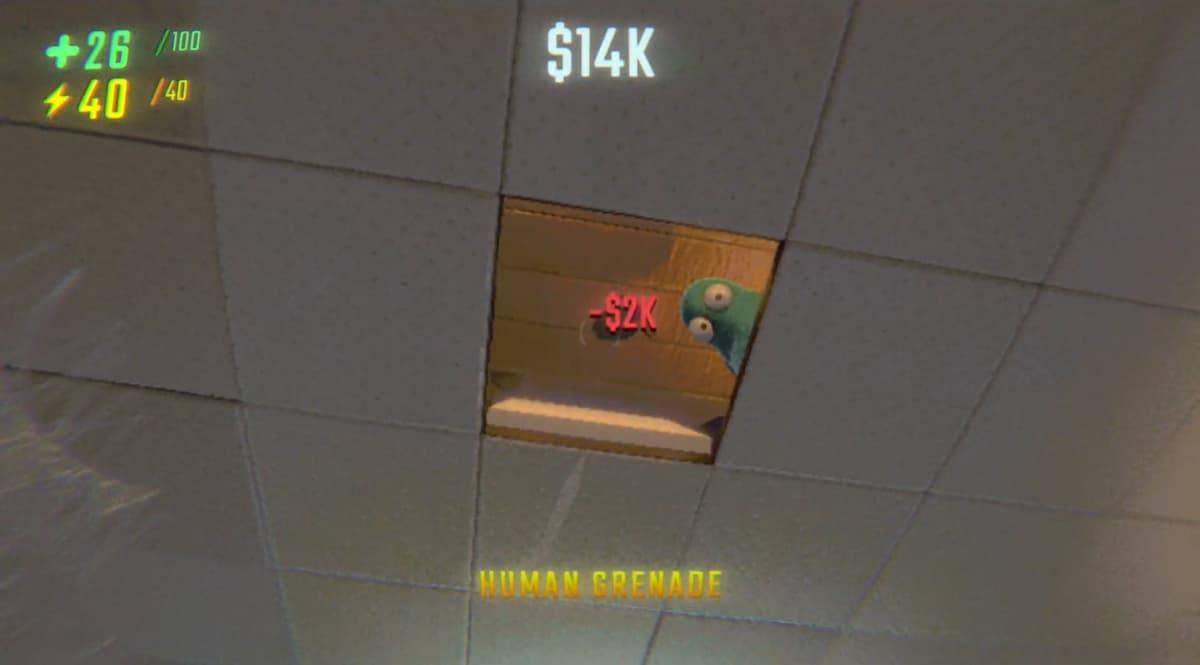A gaming monitor is essential to truly appreciate the stunning graphics and fast refresh rates your gaming PC can deliver. Why invest in a top-tier graphics card and CPU if your display can't keep up? That's why we've selected the best gaming monitors that offer sharp images and smooth motion, allowing you to enjoy your favorite PC games as they were meant to be played.
TL;DR – These Are the Best Gaming Monitors:
 Our Top Pick### Gigabyte FO32U2 Pro
Our Top Pick### Gigabyte FO32U2 Pro
6See it at AmazonSee it at Newegg ### AOC Q27G3XMN Mini-LED Gaming Monitor
### AOC Q27G3XMN Mini-LED Gaming Monitor
2See it at Amazon ### Acer Predator X34 OLED
### Acer Predator X34 OLED
0See it at AmazonSee it at B&H  ### Dell Alienware AW2725Q
### Dell Alienware AW2725Q
1See it at Dell ### Asus ROG Swift PG27AQDP
### Asus ROG Swift PG27AQDP
0See it at Newegg ### Asus TUF Gaming VG279QM
### Asus TUF Gaming VG279QM
1See it at AmazonYour gaming monitor should have specifications that match your PC's capabilities. There's no point in getting one of the best 4K monitors if your games will struggle with a GeForce RTX 4060 at that resolution. Similarly, pairing a Radeon RX 7900 XTX with a 1080p display is inefficient. The best gaming monitors will showcase your rig's full potential, delivering excellent picture quality, fast response times, and a suite of gaming features. High refresh rates ensure smooth gameplay, which can be crucial in competitive gaming scenarios.
Whether you're looking for a future-proof option with a sharp 4K display, an OLED panel, and a 240Hz refresh rate—like our top pick, the Gigabyte FO32U2 Pro—or a budget-friendly monitor better suited to a modest setup, we've got you covered. Our favorite gaming monitors have been thoroughly tested by our team and are designed to meet a wide range of needs.
Looking for savings? Check out the best gaming monitor deals happening right now.
Gigabyte Aorus FO32U2 Pro – Photos
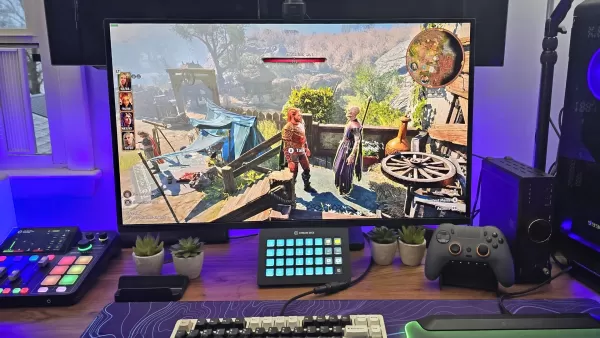
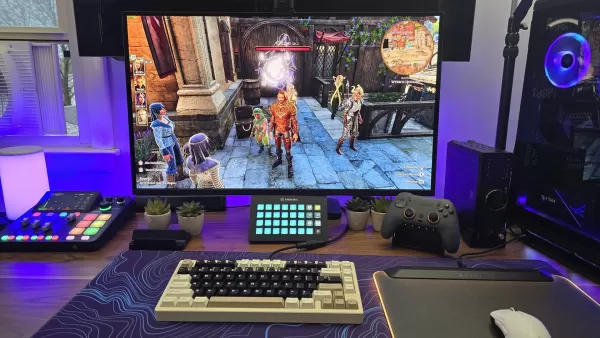 13 Images
13 Images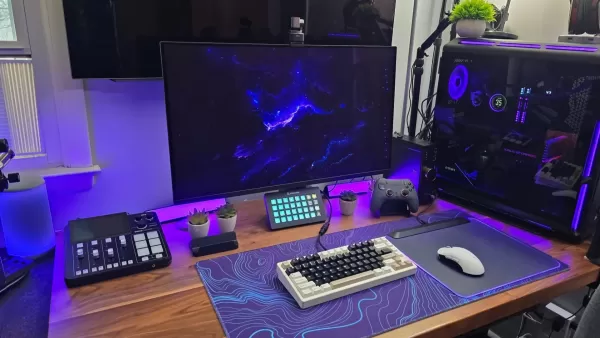


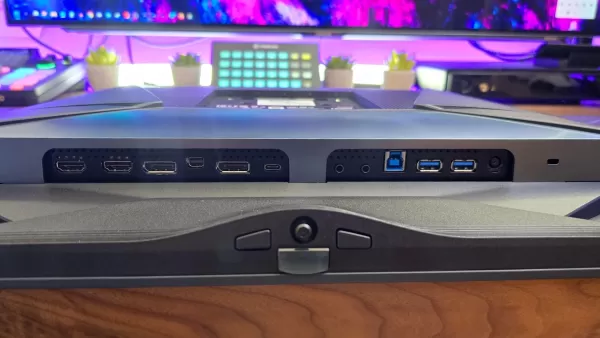 1. Gigabyte FO32U2 Pro
1. Gigabyte FO32U2 Pro
Best Gaming Monitor
 Our Top Pick### Gigabyte FO32U2 Pro
Our Top Pick### Gigabyte FO32U2 Pro
6This stunning monitor excels with its comprehensive features and OLED panel. See it at AmazonSee it at NeweggProduct SpecificationsScreen size31.5"Aspect ratio16:9Resolution3840x2160Panel typeOLEDHDR compatibilityHDR TrueBlack 400Brightness1,000 nitsRefresh rate240HzResponse time0.03msInputs2 x HDMI 2.1, 1 x DisplayPort 1.4PROSOutstanding picture qualityExtremely thin panelCONSExpensiveThe Gigabyte FO32U2 Pro demonstrates that OLED technology is becoming mainstream for top-tier gaming monitors. This 32-inch 4K monitor features an ultra-thin panel and one of the brightest displays available. Although it's pricey, the investment is justified by its exceptional quality.
This monitor is built for the future. While most current graphics cards can't fully utilize a 4K monitor at 240Hz, the Gigabyte Aorus FO32U2 supports this high refresh rate, ensuring it will remain relevant even as you upgrade your PC. It also supports DisplayPort 2.1 technology, which is not yet common in current-generation gaming PCs.
The OLED panel delivers exceptional color accuracy, covering up to 99% of the DCI-P3 color gamut. With a peak brightness of 1,000 nits and a contrast ratio of 1.5M:1, every game, movie, or desktop application looks vibrant and lifelike.
As a flagship gaming monitor in 2024, it includes features like picture-in-picture and an automatic black equalizer to fine-tune your viewing experience. You can use the Gigabyte Control Center to adjust image settings via a USB connection, making it more convenient than navigating an OSD.
This monitor is a dream for gamers, and despite its cost, you get exceptional value for your money.
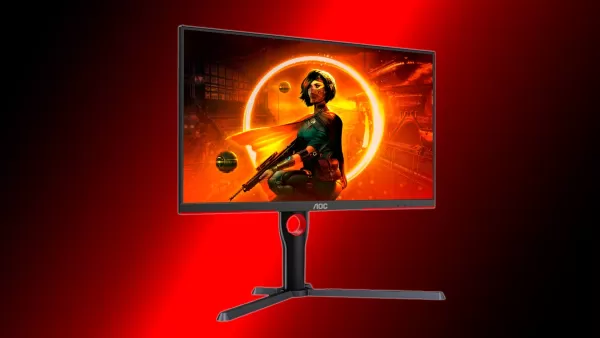 2. AOC Q27G3XMN Mini-LED
2. AOC Q27G3XMN Mini-LED
Best Budget Gaming Monitor
 ### AOCQ27G3XMN Mini-LED Gaming Monitor
### AOCQ27G3XMN Mini-LED Gaming Monitor
0QHD, 1440p, a high refresh rate, and a mini-LED backlight for true HDR make this an excellent value. See it at AmazonProduct SpecificationsScreen size27"Aspect ratio16:9Resolution2560x1440Panel typeVAHDR compatibilityHDR1000Brightness1,000 nitsRefresh rate180HzResponse time1ms (GTG)Inputs1 x DisplayPort 1.4, 2 x HDMI 2.0, 1 x 3.5mm AudioPROSMini-LED backlight technologyHigh refresh rate for improved responsiveness and decreased motion blurPeak brightness of 1,000 nits for true HDRCONSNo USB connectivityLimited local dimming zonesThe AOC Q27G3XMN offers true HDR gaming at a budget-friendly price thanks to its mini-LED backlight, which provides localized brightness and contrast up to 1,000 nits. This ensures a genuine HDR experience, unlike the typical "HDR 400" or "HDR compatible" offerings.
The monitor uses a VA panel for enhanced contrast, even without local dimming. With 336 local dimming zones, it can precisely control shadows and blacks, outperforming traditional edge-lit monitors. This technology usually costs significantly more, making this monitor an excellent value.
Even without the mini-LED backlight, the AOC Q27G3XMN is a solid choice for budget-conscious gamers. Its 27-inch screen and 1440p resolution provide crisp visuals and smooth gameplay. It lacks some features like built-in speakers or a USB hub, but its affordable price makes up for these omissions.
The compromise for its low cost is fewer local dimming zones. While 336 zones sound impressive, high-end mini-LED monitors often feature over 1,100 zones. This can lead to noticeable blooming, but many users adapt to it over time.
Despite this, the AOC Q27G3XMN remains a compelling choice, offering visuals that surpass many of its competitors at a lower price point.
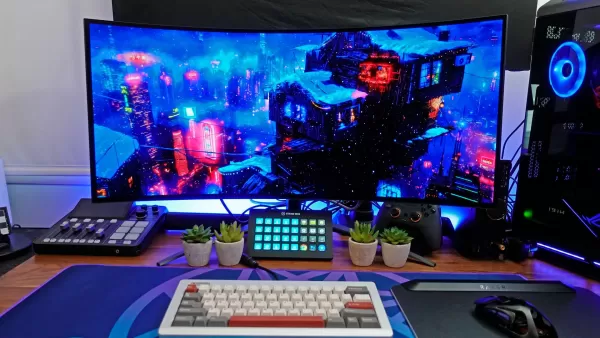 3. Acer Predator X34 OLED
3. Acer Predator X34 OLED
Best Ultrawide Gaming Monitor
 ### Acer Predator X34 OLED
### Acer Predator X34 OLED
0This spacious 34-inch 21:9 display meets all the expectations of a top-tier gaming monitor. See it at AmazonSee it at B&H Product SpecificationsScreen size34Aspect ratio21:9Resolution3440x1440Panel typeOLEDHDR compatibilityVESA DisplayHDR True Black 400Brightness1,300 cd/m2 (peak)Refresh rate240HzResponse time0.03msInputs2 x HDMI 2.1, 1 x DisplayPort 1.4, 2 x USB 3.2 Gen 2 Type-CPROSDeep blacks and bright highlightsRich, engaging colorsExcellent refresh rate and response timeOffers an immersive gaming experience CONSDeep curvature isn't for everyoneOnly reference preset is DCI-P3, not sRGBThe Acer Predator X34 OLED is our top pick for an ultrawide gaming monitor in 2025. Its 34-inch 21:9 display, combined with its high performance, makes it an exceptional choice. It's bright, fast, and offers an immersive gaming experience.
This model stands out with its deeply curved OLED display, featuring an 800R curvature. This deeper curve enhances immersion by wrapping around your peripheral vision, though it may cause slight text warping, which could be a drawback for productivity tasks.
Like other OLED monitors, it boasts a 0.03ms response time, unmatched by IPS, VA, or TN panels. At a 240Hz refresh rate, it ensures virtually no input latency, perfect for competitive gaming.
OLED monitors are renowned for their stunning visuals, and the Acer Predator X34 OLED is no exception. Its peak brightness of 1,300 nits provides lifelike highlights and infinite blacks.
The only notable downside is the lack of an sRGB mode, which is puzzling given its wide color gamut and quality calibration. However, it does offer a DCI-P3 mode, suitable for content creators and digital artists.
Alienware AW2725Q - Photos

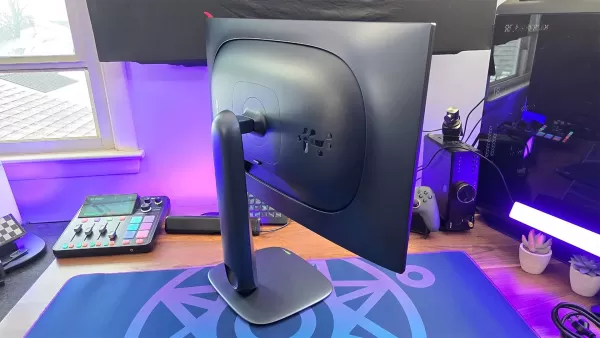 15 Images
15 Images
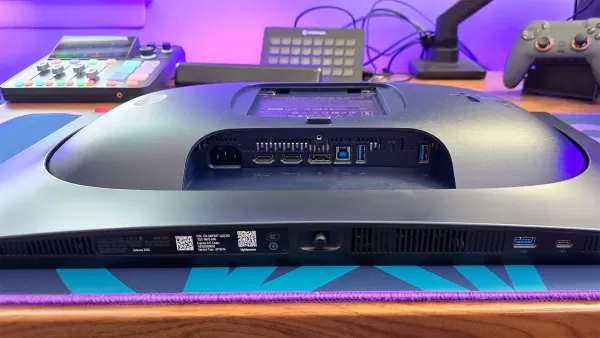
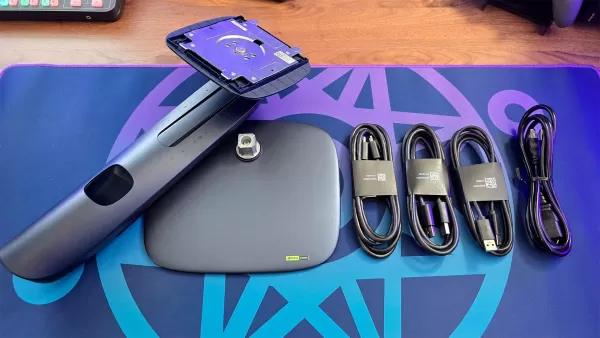
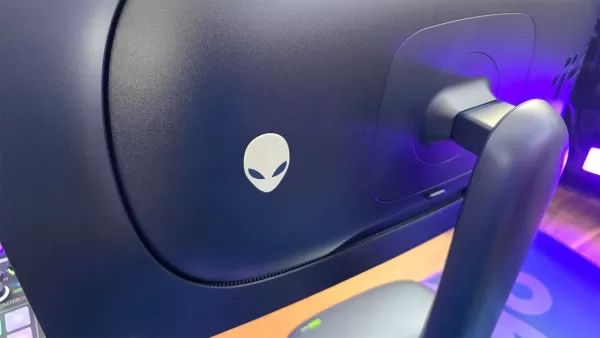 4. Dell Alienware AW2725Q
4. Dell Alienware AW2725Q
Best 4K Gaming Monitor
 ### Dell Alienware AW2725Q
### Dell Alienware AW2725Q
1Dell's Alienware AW2725Q offers great value among high-end gaming monitors, with Dolby Vision and console-friendly design. See it at DellProduct SpecificationsScreen size26.7"Aspect ratio16:9Resolution3840x2160Panel typeQD-OLEDHDR compatibilityVESA DisplayHDR True Black 400Brightness1,000 nitsRefresh rate240HzResponse time0.03msInputs2 x HDMI 2.1, 1 x DisplayPort 1.4, 3 x USB 3.2 Gen 1 Type-A, 1 x USB 3.2 Gen 1 Type-CPROSGorgeous picture with high PPI for improved clarityImpressive color accuracy right out of the boxGood value for what it offersCONSLow SDR brightnessLacks DisplayPort 2.1The Dell Alienware AW2725Q is a top choice for stunning 4K visuals and performance. It features an upgraded QD-OLED panel and a 240Hz refresh rate, along with a sleek, sci-fi-inspired design that complements various gaming setups.
At 27 inches, it offers a high pixel density of 166PPI, ensuring crisp and detailed visuals. Its OLED panel delivers outstanding color accuracy, and it supports VESA DisplayHDR True Black 400 and Dolby Vision HDR for superior image quality.
Testing the Alienware AW2725Q revealed its excellent picture quality, with various preset modes for SDR and HDR. It includes advanced color calibration options, making it suitable for content creators.
While its SDR brightness is lower, typical of OLED monitors, it achieves 1,000 nits for HDR highlights. Its 0.03ms response time and 240Hz refresh rate make it ideal for esports and competitive gaming.
The monitor supports DisplayPort 1.4, not the newer DP 2.1 standard, requiring Display Stream Compression for full resolution and refresh rate. This is visually lossless but may cause a brief black screen when alt-tabbing from full-screen games.
Priced at $899 at launch, it offers solid value and is expected to become more affordable over time.
Asus ROG Swift OLED PG27AQDP – Photos
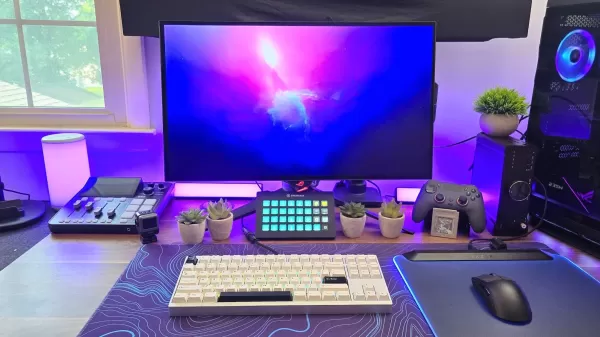
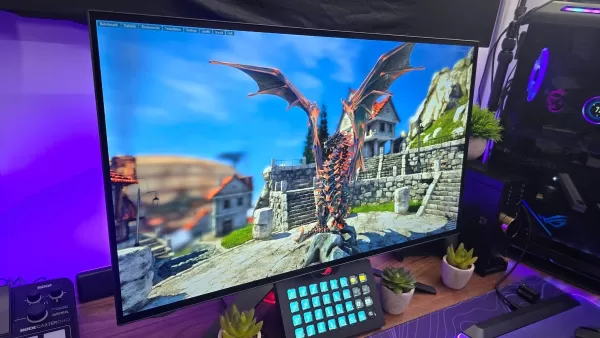 19 Images
19 Images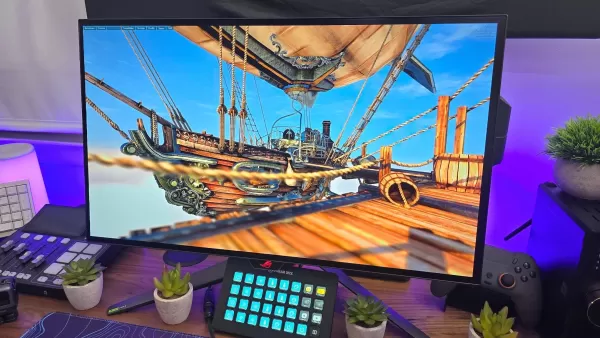
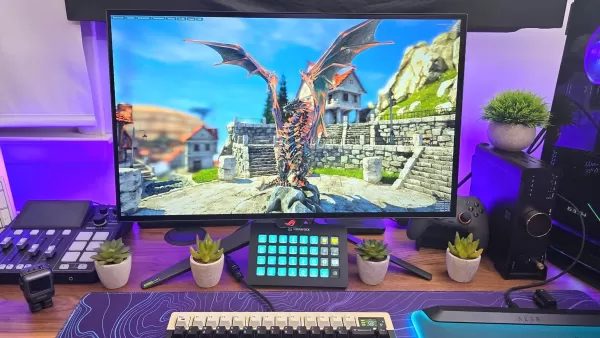
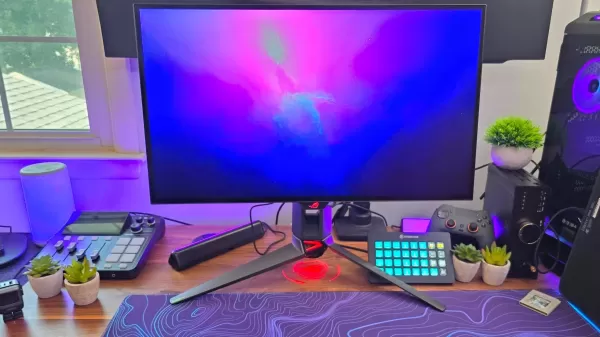
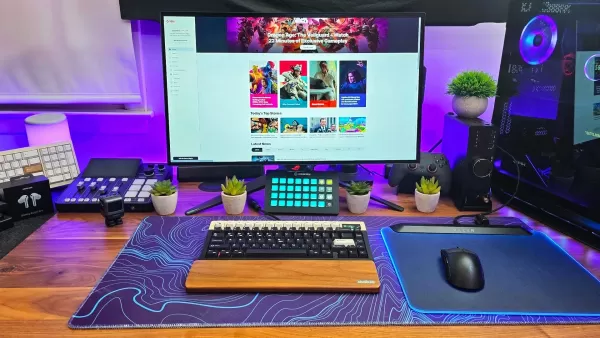 5. Asus ROG Swift PG27AQDP
5. Asus ROG Swift PG27AQDP
Best 1440p Gaming Monitor
 ### Asus ROG Swift PG27AQDP
### Asus ROG Swift PG27AQDP
0The Asus ROG Swift PG27AQDP is a top choice for competitive gamers, offering all the essential features. See it at NeweggProduct SpecificationsScreen size26.5Aspect ratio16:9Resolution2560 x 1440Panel typeOLED FreeSync Premium, G-Sync CompatibleHDRVESA DisplayHDR True Black Brightness1,300 cd/m2 (peak)Refresh rate480HzResponse time 0.03msInputs2 x HDMI 2.1, 1 x DisplayPort 1.4, 2 x USB 3.2 Gen 2 Type-A, HeadphonesPROSPerfectly sized for 1440pCan get exceptionally bright and infinitely dark for great HDRNative 480Hz refresh rateOut of the box color accuracyCONSFew games, outside of esports, will ever hit 480HzThe Asus ROG Swift PG27AQDP is ideal for esports and beyond. Priced competitively, it offers excellent HDR performance and out-of-the-box color accuracy.
Its standout feature is the 480Hz refresh rate, one of the fastest available, providing a significant edge in competitive gaming without sacrificing image quality.
The monitor's OLED panel delivers rich colors and impeccable contrast, making it ideal for gaming and multimedia consumption. Its fast response time and high refresh rate eliminate motion blur, enhancing performance in fast-paced games.
The PG27AQDP includes comprehensive OLED protection features, such as pixel shifting, pixel refresh cycles, and dynamic dimming to prevent burn-in. Asus also offers a three-year warranty with burn-in coverage.
While it lacks a KVM or USB video input, its overall performance and features make it a strong contender.
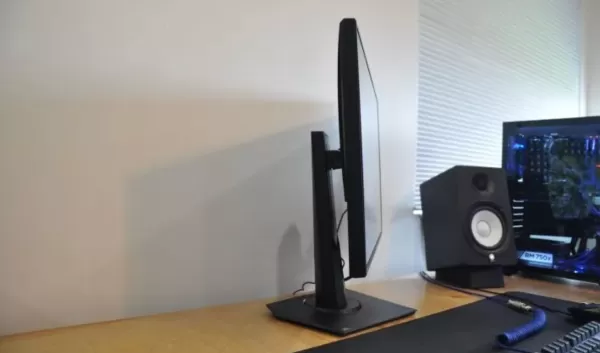
Adjustable stand on the Asus TUF Gaming VG279QM 6. Asus TUF Gaming VG279QM
Best 1080p Gaming Monitor
 ### Asus TUF Gaming VG279QM
### Asus TUF Gaming VG279QM
1This 27-inch Full HD display offers an overclockable 240Hz refresh rate, low input lag, and adaptive sync for smooth gameplay. See it at AmazonProduct SpecificationsScreen size27"Aspect ratio16:9Resolution1,920 x 1,080Panel typeIPS FreeSync, G-Sync compatibleBrightness400cd/m2Refresh rate240Hz, 280Hz (OC)Response time1ms (GtG)Inputs2 x HDMI 2.0, 1 x DisplayPort 1.2PROSBudget priceExcellent motion handlingCONSSome pixel peeping1080p monitors still hold a valuable place in gaming, especially when budget is a concern. The Asus TUF Gaming VG279QM is a prime example, offering an overclockable 240Hz refresh rate, a one-millisecond response time, and low input lag for smooth gameplay. It also supports FreeSync and G-Sync, ensuring tear-free visuals.
The monitor's 27-inch screen size is suitable for 1080p, though you might notice some pixelation. Its IPS panel provides good viewing angles and color reproduction, while its 400-nit brightness is suitable for well-lit environments. It's DisplayHDR 400 certified, but its HDR performance is limited due to a mediocre contrast ratio and lack of local dimming.
Additional features include a height-adjustable stand, multiple connectivity options, and overall good value for the price. It's an excellent choice for budget-conscious gamers seeking a high refresh rate and engaging visuals.
AnswerSee Results How to Choose a Gaming MonitorWhen selecting a gaming monitor, consider these key factors: screen size, resolution, panel type, and aspect ratio. We'll also cover technical aspects like refresh rate and variable refresh rate technology to help you make an informed decision.
Screen size: Your first question might be, "How big?" The answer depends on your space and needs. For 1080p, a screen up to 27 inches works well; for 1440p, 27 to 32 inches is ideal; and for 4K, 32 inches or larger is recommended, depending on your viewing distance.
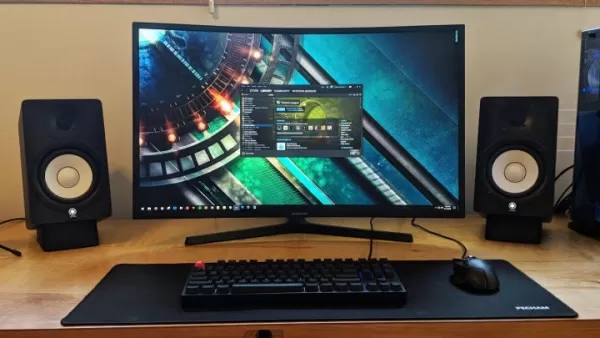 Aspect ratio: The aspect ratio affects the monitor's shape. Most monitors have a 16:9 aspect ratio, while ultrawide monitors often use 21:9 or even 32:9 for a more cinematic experience.
Aspect ratio: The aspect ratio affects the monitor's shape. Most monitors have a 16:9 aspect ratio, while ultrawide monitors often use 21:9 or even 32:9 for a more cinematic experience.
Screen resolution: Resolution impacts image sharpness. Choose between Full HD (1920x1080), Quad HD (2560x1440), or Ultra HD/4K (3840x2160). Higher resolutions require more powerful graphics cards to maintain high frame rates.
Panel type: Different panel types offer unique benefits. TN panels are outdated and should be avoided. IPS panels provide excellent color accuracy and wide viewing angles, with response times around 3-5ms. VA panels offer better contrast but may exhibit ghosting. Mini-LED and OLED panels deliver superior HDR and contrast, though OLEDs can suffer from burn-in.
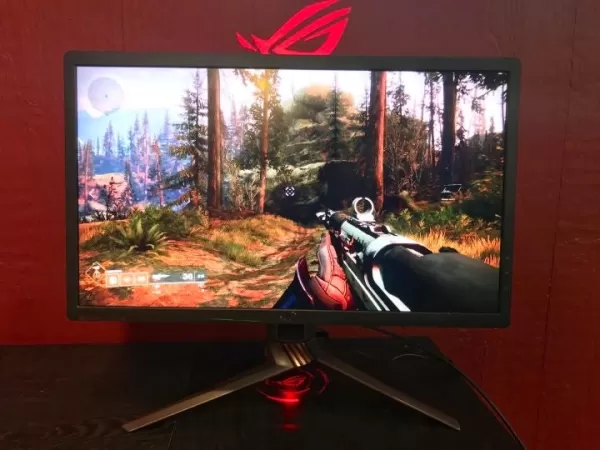 Response time: For competitive gaming, aim for a 1ms response time. For casual gaming, 3-5ms is sufficient. OLED panels offer the fastest response times at around 0.03ms.
Response time: For competitive gaming, aim for a 1ms response time. For casual gaming, 3-5ms is sufficient. OLED panels offer the fastest response times at around 0.03ms.
Refresh rate: A higher refresh rate means smoother gameplay. Common rates include 60Hz, 120Hz, 144Hz, 240Hz, and up to 500Hz. Higher refresh rates are advantageous in fast-paced games.
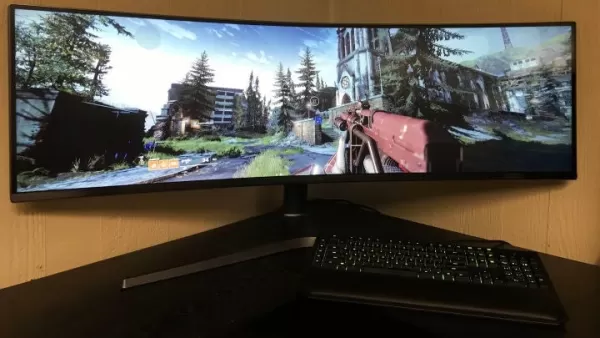 G-Sync vs FreeSync: Variable refresh rate (VRR) technologies like Nvidia G-Sync and AMD FreeSync prevent screen tearing by syncing the monitor's refresh rate with your GPU's frame rate. Both work well with compatible graphics cards, and most FreeSync monitors are G-Sync compatible.
G-Sync vs FreeSync: Variable refresh rate (VRR) technologies like Nvidia G-Sync and AMD FreeSync prevent screen tearing by syncing the monitor's refresh rate with your GPU's frame rate. Both work well with compatible graphics cards, and most FreeSync monitors are G-Sync compatible.
Ensure your graphics card can handle the chosen monitor's resolution and refresh rate to avoid wasted potential.
Gaming Monitor vs. Gaming TV: Which Is Best for You?
Choosing between a gaming monitor and a gaming TV depends on your gaming preferences and setup. Gaming TVs often offer superior brightness, contrast, and color due to their larger screens and advanced panel technologies. They handle HDR content well and can sometimes be more cost-effective than high-end monitors.
However, gaming monitors typically provide lower input lag, higher refresh rates, and better pixel response times, crucial for competitive gaming. Budget monitors can offer high refresh rates and adaptive sync, while TVs in the same price range may lack these features.
Monitors are generally better for desk setups and productivity, while TVs are ideal for larger screens and couch gaming. Consider your space, gaming style, and the specific features you need when making your choice.
Gaming Monitor FAQ
What's the difference between Nvidia G-Sync and AMD FreeSync?
Both technologies use VRR to synchronize the monitor's refresh rate with the GPU's frame rate, preventing screen tearing. Nvidia offers G-Sync Compatible, G-Sync, and G-Sync Ultimate, while AMD provides FreeSync, FreeSync Premium, and FreeSync Premium Pro. Each tier offers different features, from basic tear-free gaming to enhanced HDR and color accuracy.
What’s the best resolution for a gaming monitor?
The ideal resolution depends on your needs. For high refresh rates and budget considerations, 1080p is suitable. For sharper visuals, 4K is ideal for larger screens, though it requires powerful hardware. 1440p offers a good balance between resolution and performance, suitable for competitive gaming.
Is HDR worth it?
HDR enhances color, brightness, and contrast, making games more immersive. True HDR requires at least 1000 nits of peak brightness, though monitors with 600 nits can still offer benefits. OLED and Mini-LED panels provide the best HDR experience, while many monitors claiming HDR support may fall short.
When is the best time to get a gaming monitor?
Gaming monitors can be pricey, so look for deals during major sales events like Amazon Prime Day, Black Friday, and Cyber Monday. Also, check for discounts when manufacturers release new models, as older models often go on sale.



















